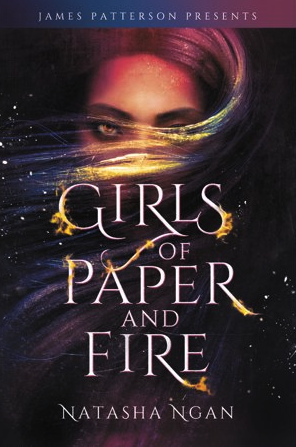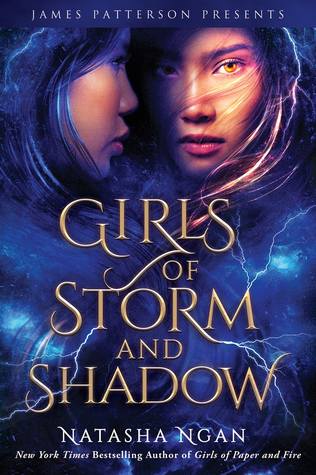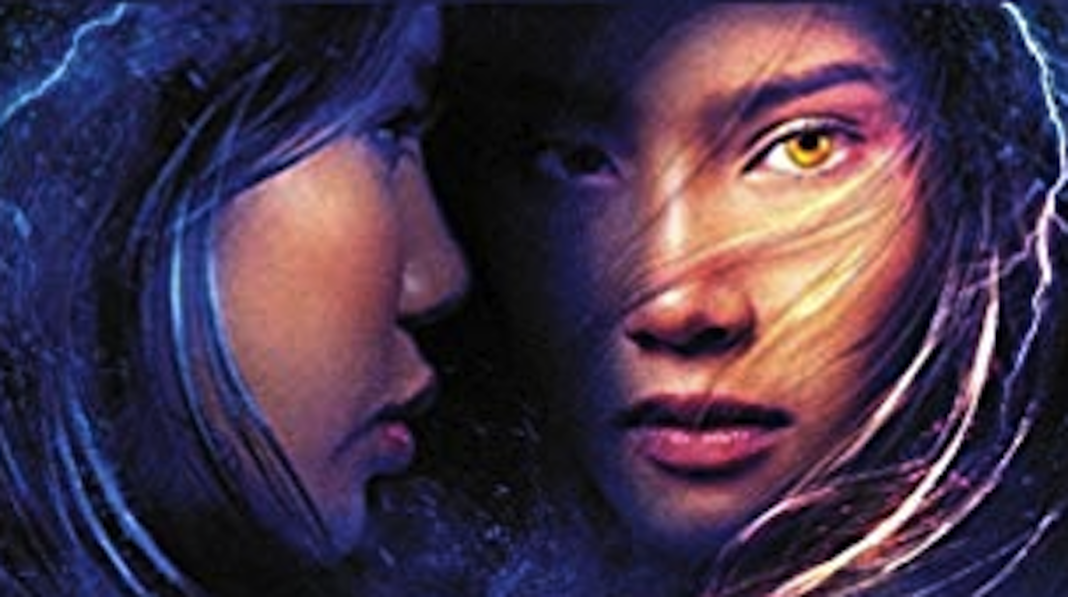Girls of Storm and Shadow, the novel by Natasha Ngan, is an engaging fantasy adventure that deals with sexual assault and recovery from trauma in a thoughtful and engaging way.
However, Girls of Storm and Shadow is the second book in a trilogy, and it shows: the first book, Girls of Paper and Fire, is pretty much essential reading before starting the sequel. The plot in Girls of Storm and Shadow doesn’t just build on the story of the first book, it’s a continuation: the plot flows directly from the climax of Girls of Paper and Fire. Furthermore, to fully appreciate the journey the protagonist, Lei, undergoes in the sequel, the first book is a necessity.
Girls of Paper and Fire

Both books open the same way: with a map of the territory covered in the story (in both volumes, a useful resource that the reader will want to bookmark so they may flip back to throughout their read) and a excerpt from The Ikharan Mae Scripts and the Demon King’s postwar Treaty on the Castes.
The excerpts set up two important components of the fantasy world crafted by Ngan: first, the society is rigidly divided by a caste system; and second, the nature of the three castes, which are Paper (human), Steel (part human and part demon), and Moon (fully demon). Lei is a member of the Paper caste, but she has remarkable gold-colored eyes that catch the attention of members from every class.
The demons come in various animal forms: there are cat form demons, dog form demons, bird form demons, and bull form demons. While there are various factions and divisions among the demons, they are all perceived to be superior to humans, and this superiority is used to justify the subjugation (and outright enslavement) of the Paper caste.
Ikhara is a fantasy world that feels fully realized, in part because of the way that the books closely follow Lei’s perspective. When she is abducted from her home in the first book and brought to The Hidden Palace to become one of the Paper Girls – courtesans – in service of the Demon King, the reader’s knowledge of the world expands concurrently with Lei’s.
Getting to know the wider world of Ikhara is a delight. The story is filled with asides to past experiences and historical stories that bring the world to life, and the details provided about the mouthwatering meals and opulent palaces give the setting a sense of verisimilitude. The magic used in the series is fascinating and full-realized, with spells used to augment weapons and clothing as well as to provide healing. In spite of the texture provided by these details, the series never gets bogged down in the weeds: the story grabs the reader and refuses to let go until the pages have been exhausted.
Sexual assault is an important topic for the series, and the books deal with the theme in an effective and meaningful way, including considering the motivation that men in power have for committing rape and examining at the process of coping with the trauma in the aftermath. A content warning appears at the beginning of both books, and readers who are not comfortable with reading scenes that include sexual assault will find the content overwhelming. For some survivors, however, the process of reading about Lei’s experience and how she survives and deals with her trauma afterward will be intensely cathartic. The narrative is never exploitative, and Lei’s experiences are depicted compassionately but honestly.
Girls of Storm and Shadow
If you have yet to read the first book in the series, Girls of Paper and Fire, the following section will reveal key details about the climax.

Girls of Storm and Shadow picks up shortly after the first volume ends and wastes little time catching readers up on a few unresolved questions left from the conclusion of the first book (including the fate of Lei’s family). In an effortless opening sequence, the current situation is established and readers are introduced to Bo and Nitta, a pair of leopard form demons – siblings – who play an important role in the second book.
While the majority of the action in the first book was confined to the Hidden Palace, where Lei was held captive as a Paper Girl, Girls of Storm and Shadow takes the form of a cross-Ikhara adventure, expanding the scope of the world and revealing many of the fascinating and complicated characters that inhabit it.
While the romance between Lei and Wren was in its whirlwind nascent stages in the first book, the couple faces significant challenges now that they have escaped the palace. The development of their relationship is absolutely necessary and handled very well, with the situation suitably complicated by the introduction of Wren’s father as well as the revelation that Wren may be using magic to a degree that is taking a toll on her health. On a purely subjective level, I enjoyed the rollercoaster of new romance in the first book, and Girls of Storm and Shadow fortunately includes a budding romance between two other characters to satisfy those of us who can’t get enough of characters falling in love.
Girls of Storm and Shadow demonstrates why it is so essential to ensure as many different perspectives as possible are able to tell their stories. While there are many familiar genre elements at play in the series, Ngan pulls from her background as a child raised between Malaysia (where the Chinese side of her family is from) and the UK to draw inspiration, and everything about Lei’s world feels fresh. Combined with lyrical prose and stakes high enough that putting the book down while pages remain becomes unthinkable, Girls of Storm and Shadow is an excellent middle entry in an outstanding fantasy series.
The only major detraction? As soon as you finish this novel, you’ll find yourself immediately clamoring for the next volume in the series.
Girls of Paper and Fire and Girls of Storm and Shadow are available in bookstores now.






